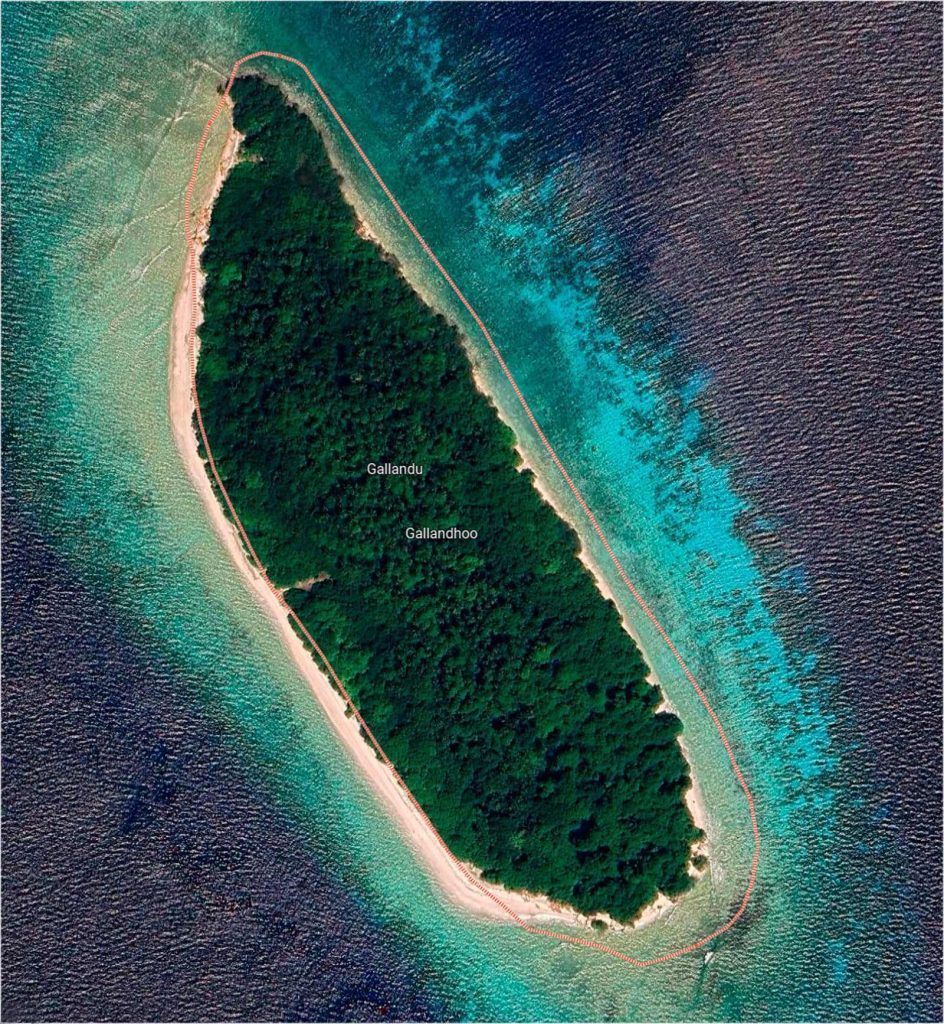Gallandhoo, with an area of 12 hectares, is a vital part of the ecosystem of the Ihavandhippolhu Atoll in the Maldives, a strict nature reserve (Category 2 according to the IUCN). This protected area is home to rich terrestrial and marine biodiversity, featuring unique species such as Pandanus tectorius trees, locally known as Lhos Gas. The island is uninhabited, which contributes to its better conservation and the maintenance of its role in the study and protection of the marine and terrestrial environment of the Indian Ocean atolls.
Content
Location of Gallandhoo, Maldives
Strategically located in the southern part of the Ihavandhippolhu Atoll, Gallandhoo offers an isolated natural refuge, accessible from the main islands of the Maldives. Despite its accessibility, it maintains an atmosphere of serenity and isolation, ideal for the protection of its ecosystem.
Best Time to Visit Gallandhoo
Visiting during the northeast monsoon (Iruvai Moosun) is ideal, as the weather favors the observation of migratory birds, and nature is at its most vibrant.
However, due to its classification as a strict nature reserve by the IUCN, its main goal is the rigorous protection of biodiversity, specific geological, and geomorphological features. In this area, human visits, usage, and impacts are strictly controlled and limited to ensure the conservation of its values. This means that public access is very limited to avoid disturbances that could compromise conservation goals. Permitted activities are typically for scientific or educational purposes under strictly regulated conditions and often require special permits. General public access for recreation or tourism is typically prohibited or severely restricted to minimize human impact.
How to Get to Gallandhoo
From Malé
The route from Malé to Gallandhoo is a combination of a domestic flight and a short boat ride, offering a picturesque experience as you approach the island.
From Addu
From Addu, Gallandhoo can be reached via a combination of domestic flights and ferry service, featuring impressive views of the Indian Ocean.
From Hithadhoo
Hithadhoo offers direct speedboat connections to Gallandhoo, providing a fast and exciting way to dive directly into the island’s vibrant nature.
From Gan
Gan, being one of the closest islands, has daily boat services that take you directly to the shores of Gallandhoo in less than an hour.
Geography of Gallandhoo
The island features rocky terrain covered by dense and varied vegetation, with fertile soils supporting mangroves and extensive areas of trees such as the Lhos Gas, essential for the island’s ecological stability.
Flora and Fauna of Gallandhoo
The island’s fauna includes a variety of seabirds, primarily lesser noddies (Kurangi), which play an important role in the local ecosystem and in fishing, helping fishermen locate schools of fish during the day. These birds travel from various parts of the Indian Ocean to nest on the island, especially visible at sunset when they arrive in large numbers to rest.
In terms of flora, Gallandhoo stands out for its mangrove vegetation and coastal plants that are less common in other parts of the Maldives, providing an essential habitat for local fauna and migratory birds. Additionally, the island is crucial for the conservation of various bird species and marine life, significantly contributing to the biodiversity of the atoll.
This unique environment makes Gallandhoo a crucial location for scientific studies and conservation, maintaining its status as a natural reserve where human interaction is extremely limited to protect its delicate ecosystem.
Conservation and Protection
No tourist activities are allowed on Gallandhoo, ensuring the preservation of its natural environment. This makes the island a natural laboratory for scientists and conservationists who study its ecosystems and develop strategies for marine and terrestrial conservation.
Ecological Impact and Significance
Gallandhoo plays an essential role in the conservation of migratory bird and marine species, serving as a model of successful conservation in the Maldives.
Next recommended parks: Protected areas of the Maldives.

